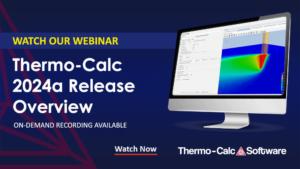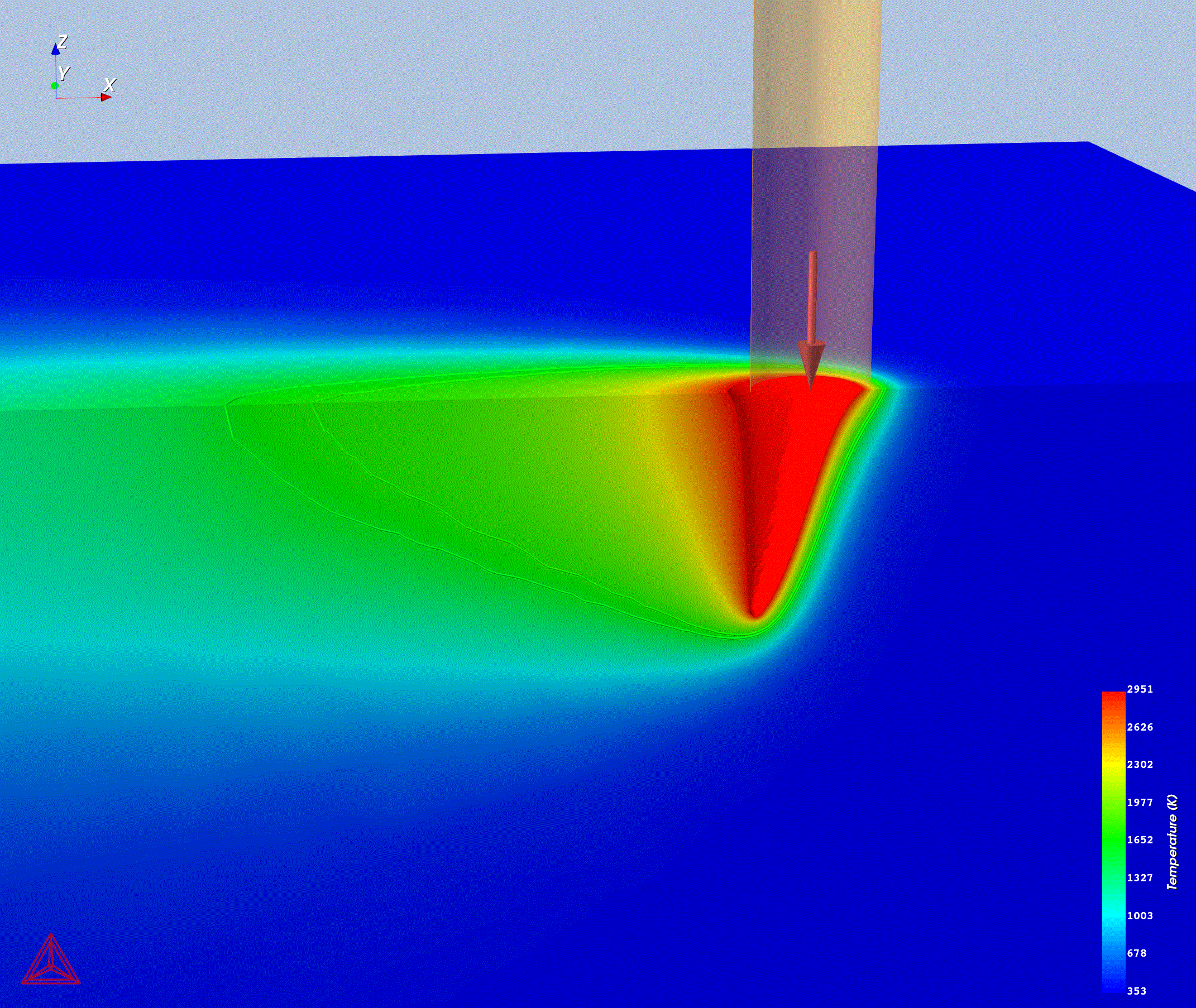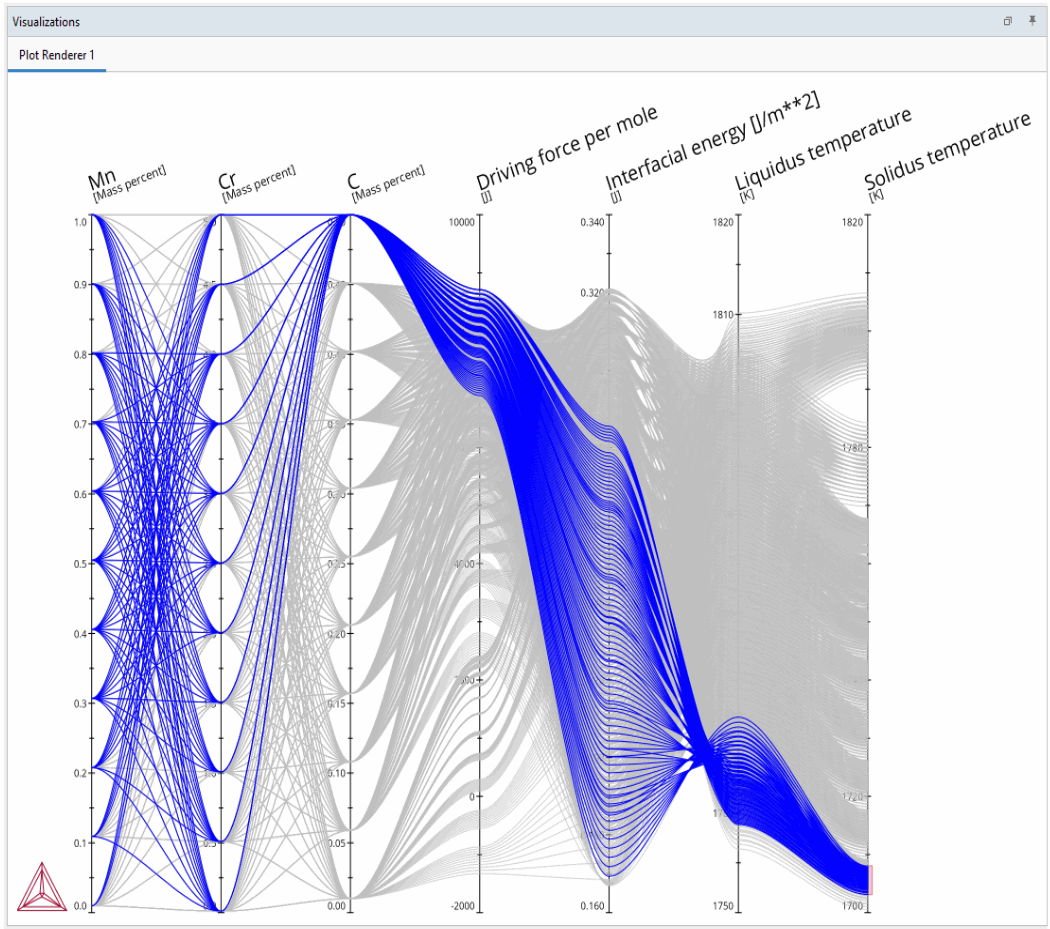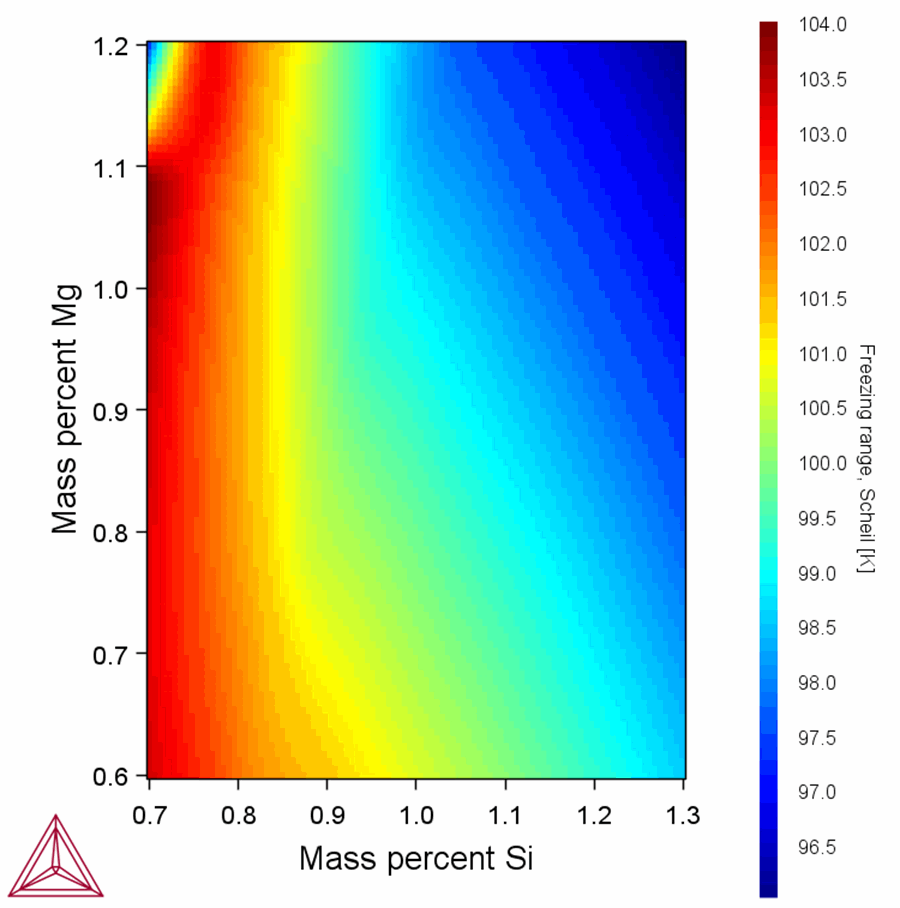Thermo-Calc 2024a Available Now
The Heat source functions can be saved as a user-defined heat source, which will be available from the heat source menu.
Two examples are included in the software demonstrating this new feature:
New Columnar to Equiaxed Transition (CET) Property Model
Another valuable addition for Additive Manufacturing users and for those of you working with casting is the new Columnar to Equiaxed Transition Property Model. This Property Model calculates the fraction of equiaxed grains that correlates with a certain solidification condition, specifically thermal gradient (G) and solidification growth rate (v). This provides valuable information on the solidification microstructure.
Three new examples are included in the release demonstrating this new model:
The Parallel coordinates plot is useful when interpreting multidimensional data and to compare how different parameters affect each other. This is especially useful in materials design after performing a batch or uncertainty set of evaluations when multiple inputs are varied at the same time and multiple model outputs are given as a result.
Interpreting results of the plot:
The new plot type is used with the Property Model Calculator and either the Grid, Batch, or Uncertainty Calculation Type.
This change enables accurate modeling of the strengthening effect to:
New Martensitic Steel Strength Property Model in the Steel Model Library
The Steel Model Library introduces one new Property Model, Martensitic Steel Strength, which calculates the yield strength and/or hardness of martensitic steels.
A new example is included in the release demonstrating this new model:
New Strain-Age Cracking Property Model in the Nickel Model Library
The Nickel Model Library also introduces a new Property Model, Strain-Age Cracking, which is used in applications related to welding and additively manufactured components where there are interface strains between γ’ (gamma prime) and the matrix.
Transform 3D Size Distribution to 2D in the Precipitation Module (TC-PRISMA)
The Precipitation Module (TC-PRISMA) adds the ability to convert three-dimensional (3D) distribution to two-dimensional (2D) distribution, which allows users to compare simulations with experimental data.
Users can calculate two-dimensional:
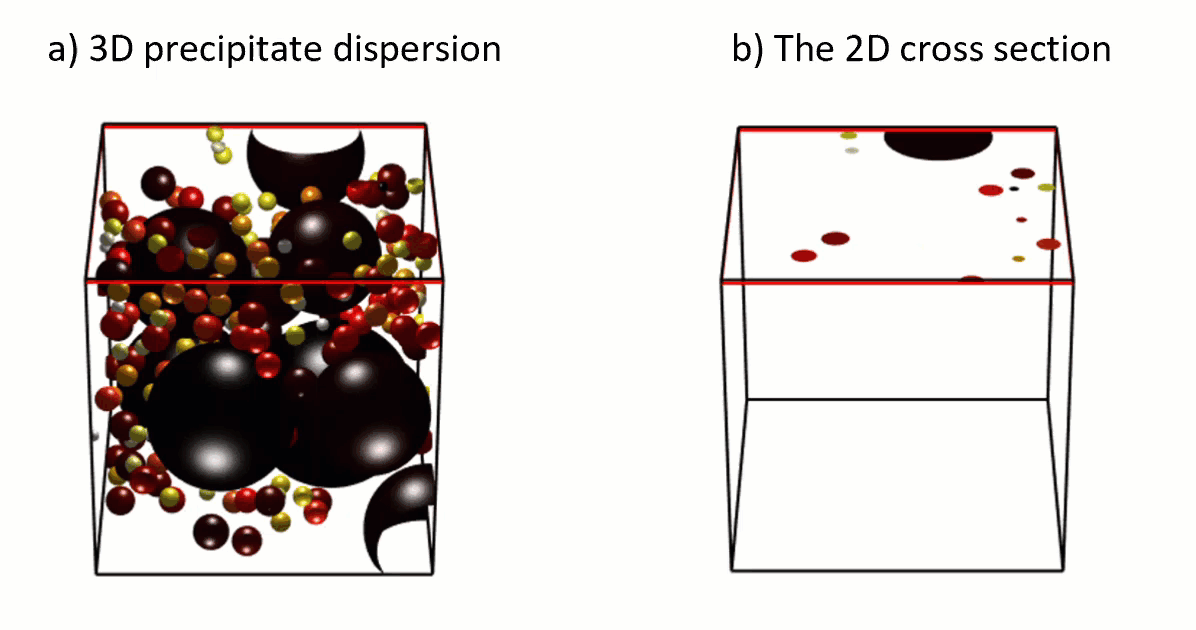
This figure illustrates the two-dimensional cross section obtained from sectioning a three-dimensional dispersion of spheres, relevant to Scanning Electron and Optical micrographs taken of material with second phase precipitates.
To learn more, you can read the release notes or the help, which both go into detail about this new feature.
A new example is included in the release demonstrating this new feature:
Databases and Thermophysical Properties
New Databases
TCSALT1: Molten Salts Database
TCSALT1 is a completely new thermodynamic database for molten salts. The database can be used for a variety of applications, especially for processes involved with recycling aluminum where fluxes are used. The database covers the most common fluxes and you can study the flux ability to dissolve inclusions, like oxides, removal of unwanted elements in the Al-melt and how this varies with flux composition and temperature.
The database can also be used to understand High Temperature Corrosion where molten salts can destroy the corrosion resistance.
The database includes:
Updated Databases
TCCU6.2: Copper-based Alloys Database
The copper-based alloys database was updated to version TCCU6.2. Users who have a license for TCCU6 and a valid Maintenance and Support Subscription receive this upgrade for free.
